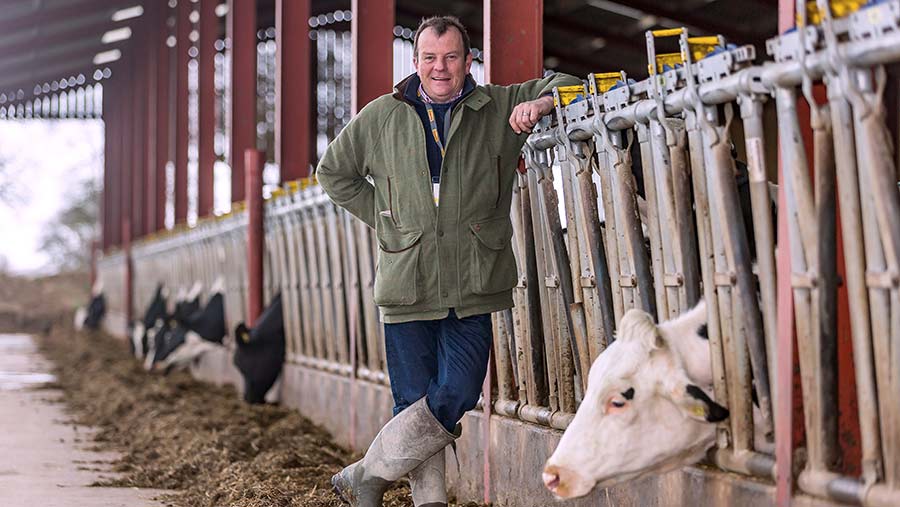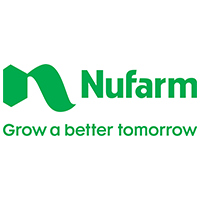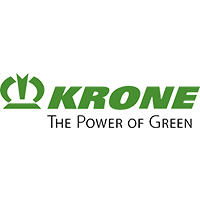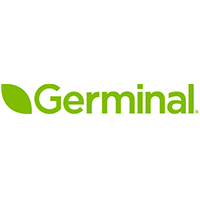Why multicut silage is worth higher contracting fees for farmer
 © Richard Stanton
© Richard Stanton Switching from four cuts of silage to six is helping a Welsh dairy produce an extra £72,000 worth of milk sold.
While the additional cost of cutting grass more frequently can put some dairy farmers off moving to a multicut system, Martin Evans believes the improvement in forage quality is more than paying for the extra contracting charges.
Martin and his sons, James and Josh, who farm 383ha across two units in Oswestry and Four Crosses, have been running a multicut system for the past two years in an attempt to improve forage quality and drive cow intakes to 12-12.5kg a head a day.
See also: How dairy farmers are making four cuts of 11.3ME silage
While having their own contracting business helps ensures grass is cut before quality declines, Martin says each enterprise must stand on its own two feet and therefore the dairy pays the contracting business for its services.
This has meant that they have scrutinised the return of cutting more frequently and believe it has been a worthwhile investment (see “Costings explained”).
Farm facts
- 600-head dairy run by eldest son James, 27
- Milking herd made up of 44% heifers
- 610 home-bred youngstock
- Farming 385ha in total; 150ha owned, 113ha rented and 121ha tenanted.
- Milking three times daily producing 12,308kg a cow annually, at 3.7% butterfat and 3.2% protein
- Ration made up of 60% maize and 40% forage
- Son, Josh, 25, heads up the agricultural contracting business
- Also run an agricultural construction company
- Recently diversified into poultry and have two 56,000-bird broiler sheds
Reseeding
About 25% of the 162ha silage platform is reseeded annually using a 50/50 mixture of diploid and tetraploid varieties with narrow heading dates (from 28 May to 4 June) to ensure everything grows at the same rate.
The seed mix is made up of 50% intermediate and 50% late heading varieties to give leafy growth year-round.
Fertiliser and slurry application
Fields are cut every 28 days. Before first cut, 70 units of nitrogen and slurry are applied to grass and thereafter 42 units are applied between each cut as soon as the foragers have left the field.
Last year, the first application of slurry was put on using an injector system and a dribble bar was used following subsequent cuts.
Harvesting
Mowing typically starts at lunchtime using a butterfly mower capable of cutting 30ft in one pass.
Grass is mowed at a height of 3cm to leave enough residual for rapid regrowth and to prevent smearing the soil.
Tedders then follow behind the mowers and they target a rapid wilt of 35-40% dry matter within 24-36 hours.
“Speed is of the essence. We need to get first cut, first cut, first cut when it comes to quality,” says Martin, who believes multicut offers the best opportunity to provide cows with a stable diet over and above grazing and zero grazing.
Clamping
First cut is ensiled on its own and second, third and fourth are layered together in a second clamp.
Fifth and sixth are also layered in a third pit, with a silage compacter used to achieve adequate compaction.
Martin, who hosted Farmers Weekly’s Grassland Management event last week (13 March), says layering the silage rather than putting third in front of second, for example, provides improved consistency.
“In the past we found when you feed first cut, you have fantastic quality silage, and if you make a poor second cut, you have that for however long that clamp is open.
“By layering it you spread the risk and are able to feed the cows one diet for longer.”
The biggest downside to the system, Martin says, is that because forage isn’t as fibrous and because cows are producing more milk compared to when they grazed cows many years ago, they are struggling to hit butterfat targets of 4%.
Therefore, in May they will stop supplying Arla and move to Muller, which aren’t penalising milk producers as heavily for constituents.
Costings explained
- Four cuts cost £55/acre per cut (or £220/acre in total)
- Six cuts cost £42/acre per cut (or £252/acre in total)
- Difference: £32
- £32 x 400 acre [total grassland cut for silage] = £12,800
- Silage quality has improved from 11.1ME to 12.3ME by cutting more frequently. This equates to an extra 1.2 ME
- 1.2 x 6.5kg DM [cow intakes of grass a cow a day] = 8MJ. This will produce an additional 1.5 litres of milk a cow a day
- If milk is valued at current price of 27p/litre, this equates to an extra 40p/litre in total
- 600 [total cows] x 40p x 300 [days In milk] = £72,000 – £12,800 (extra cost of two more cuts) will give you £59,200
Or:
- 8MJ of energy will replace 0.6kg of concentrate. 600 x 400 = 108t/concentrate in total @£200/t [£100/t for half] = £25,000 saving
Grass Management event
Thanks to NuFarm, Krone, Germinal and Wynnstay, whose sponsorship made it possible to run this inaugural Grass Management event. Farmers Weekly had full editorial control of this article.




